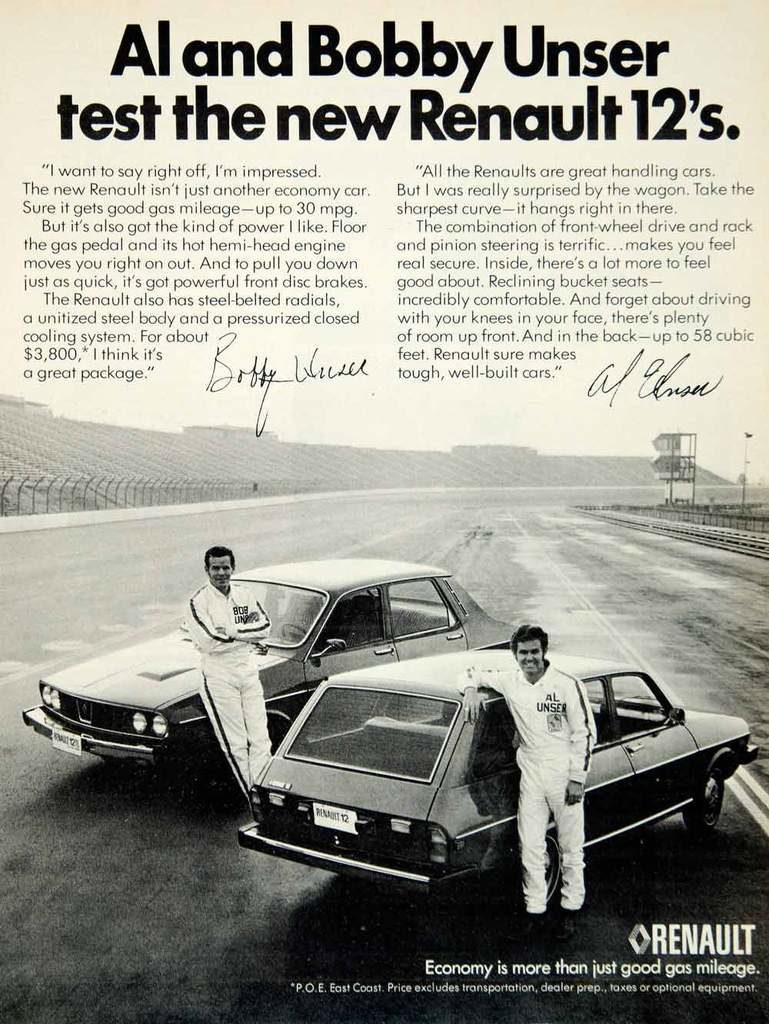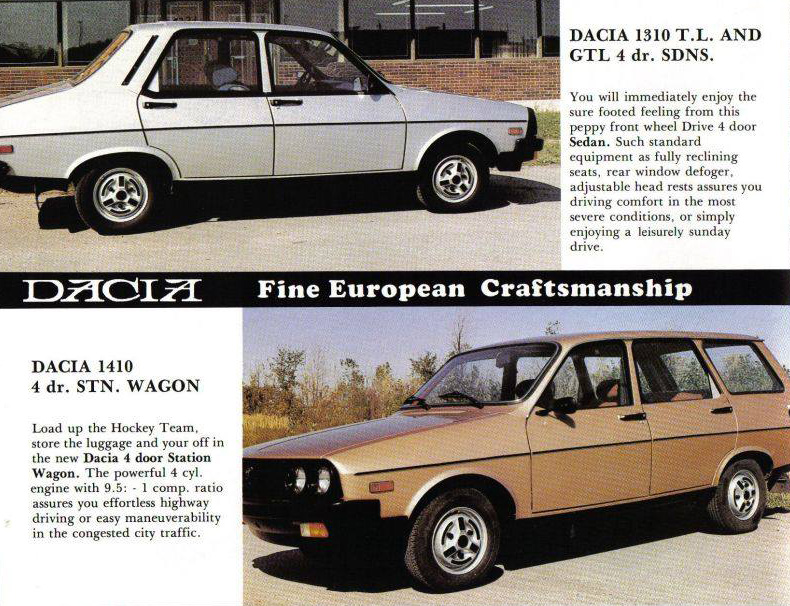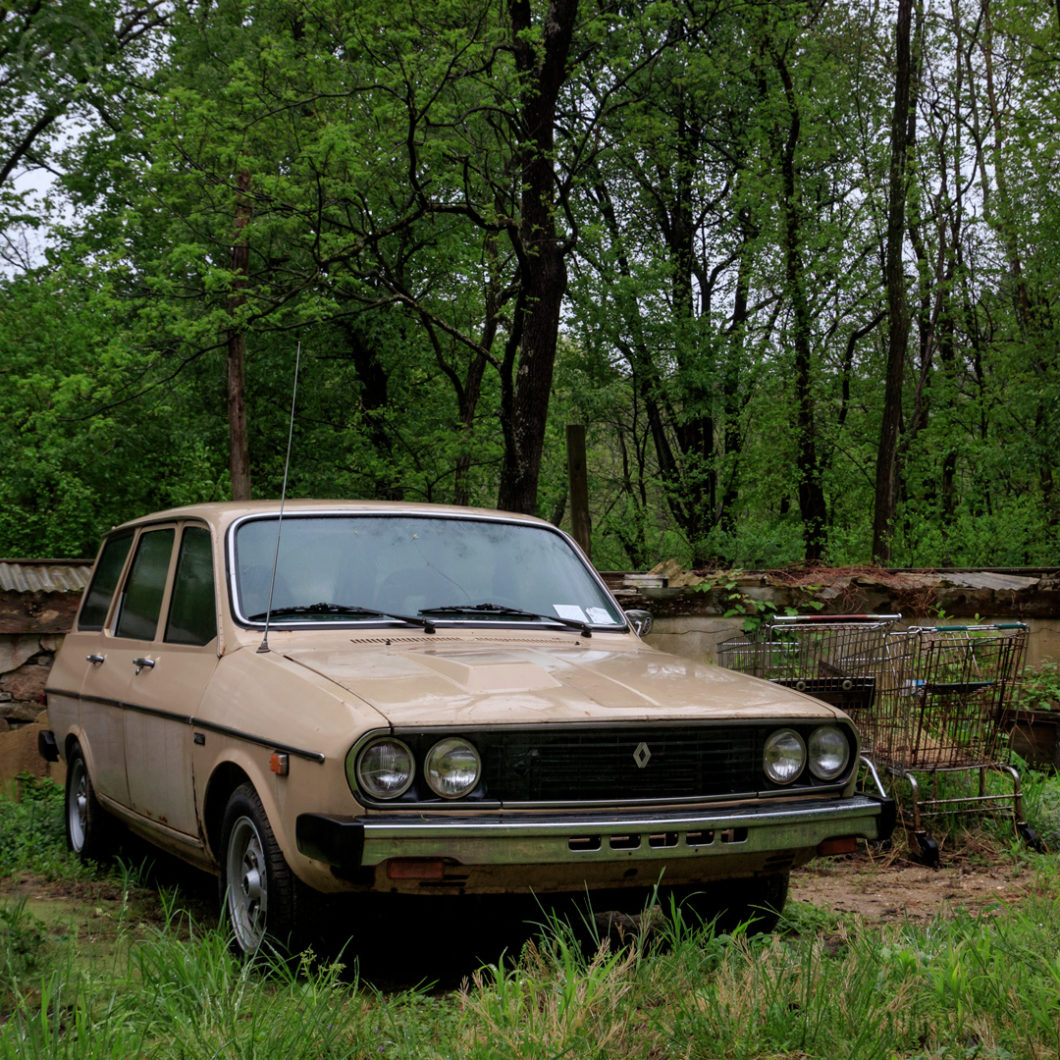A huge global success, more than 2.5 million Renault R12s were made from 1969 to 2000 (when the last Renault Toros, a Turkish-built version, rolled off the line). Nearly 2 million more were license-built in Romania by Dacia until 2004.
But in the U.S., the R12 struggled – probably due to Renault’s small dealer network (less than 250 dealers nationwide for much of the 1970s) and lingering doubts about quality that dated back to the Dauphine.
For an “economy car” (in 1970s U.S. terms) it was relatively large – nearly as big as a Ford Maverick and with loads of space inside. It wasn’t fast, but it was a good handler giving good MPG – but it never seemed to register with most U.S. consumers. Since people rarely save economy cars, U.S. survivors are very rare and, like this one, mostly in the hands of people who love them.
The Long Road of Project 117
Known internally as “project 117,” the R12’s genesis dated back to late 1963, with the goal being to bridge the large gap between the Dauphine-based R8 and the newer fwd R16 in the works for 1965.
Like the R16 and the tiny R4, the 12 would be front-drive, but unlike those two the north-south engine was mounted ahead of the front axle rather than behind. It was meant to be almost as “middle class” as the R16, but had to be easy and cheap to build in lots of places like the R4.
That brief was one reason why the rear suspension was a rigid axle instead of and IRS setup – it was made to cost. To appeal to a broad swath of market tastes for the same reason, the styling was very mainstream – the defining element of the sedan being its tall sloped roof. Initially, it was powered by the 1,289-cc Sierra engine, used in many Renaults. Introduced only as a 4-door in the fall of 1969, it was an immediate hit in Europe.
American Arrival

U.S. models were not introduced until mid-way through 1971, by which time a wagon and the Gordini version had been launched in Europe. Renault had learned well how demanding U.S. drivers were and the U.S. spec R12s replaced the Sierra with the 1,647-cc engine from the R16 as a result, with 73 hp early on, then 69hp, and then back to 72 hp with a new cylinder head for 1975.
The R12 wagon was the first Renault station wagon to be offered in North America, though Renault sold the 16 as a “sedan-wagon” in the days before people knew the word “hatchback.”
The R12 (and the derived R15/R17) didn’t find too many U.S. buyers – sales slumped to under 7,000 units in 1976 (when this one was built), a tiny sliver of Renault’s 1.2M global production that year.
Renault’s office in Englewood Cliffs, New Jersey (today the site of an FCA dealership), however, never stopped trying, at one point enlisting celeb endorsements from racers Bobby and Al Unser; but some of the malaise may have had something to with who ran the office.
Jean Ordner Moves to Europcar
In 1972, long time manager Jean Ordner was transferred back to France to run Europcar – a company he greatly expanded. Ordner had managed to turn the ship around and increase U.S. sales post-Dauphine, but his replacement, Georges Basiliou, supposedly often clashed with Ordner’s former staff and Renault’s U.S. ad agency at the time.
The addition of the R5 sparked new demand for Renaults and the 12 was dropped from the lineup after the 1977 model year, a few months before its replacement in Europe, the 18, came online. Americans would also get the 18 (eventually), but by then Renault had purchased part of AMC, and greatly expanding its U.S. presence.
Everywhere Else
The R12’s fate was different in just about every other market – but particularly South America, where the R12 was hugely popular in Argentina and Colombia and the basis for Ford Do Brazil’s long-lived Corcel – production in South America lasted into the 1990s.
In Mexico, where the R12 was built at Ciudad Sahagún, the 12 was much more popular and enjoyed better support particularly in the south of Mexico. The Renault plant in Sahagún closed in 1986, but the 12 is still a fairly common old car in some parts of Mexico.

The R12 returned to the Northernmost part of North America in the 1980s as the Dacia 1310/1410, being sold in Canada for much of the 1980s, but with sales primarily confined to Quebec, which was North America’s most interesting car market at that time.
This particular R12 wagon is owned by long-time friend of Old Motors Dan R., who is well known in the American Renault community. Dan’s ability to make almost any unusual vehicle roadworthy again and see the interesting parts of cars most people ignore are skills we should all aspire to.
If you want to see more U.S. R12s (and Canadian Dacias), visit Renault 12 USA.

